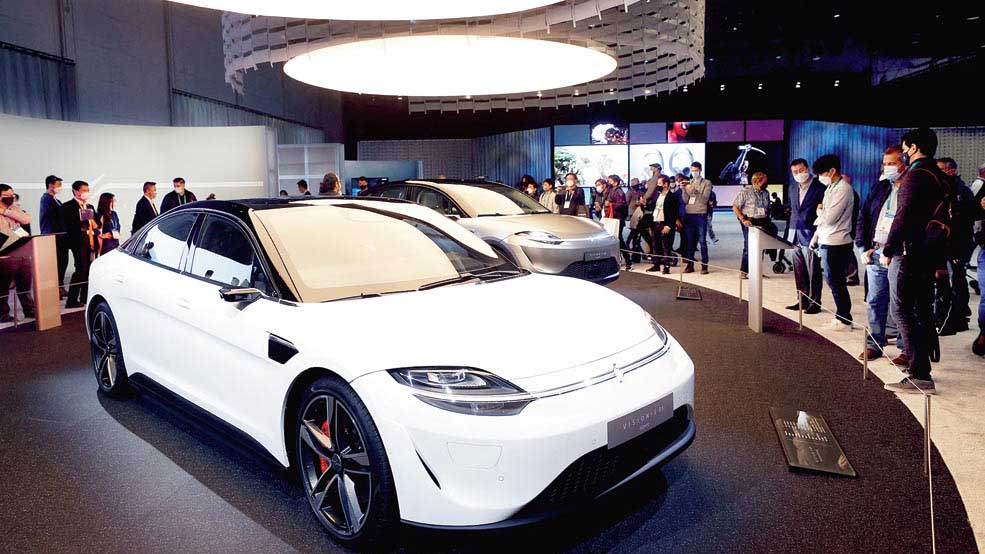The 2022 edition of the CES indicates the direction in which we can expect automotive technology as well as the industry as a whole to go. Here are our picks
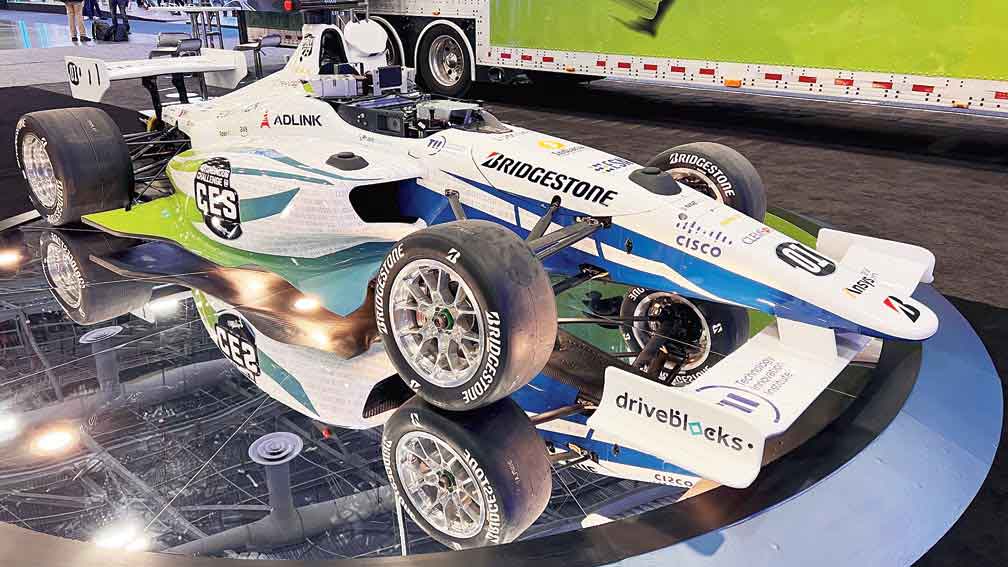
DALLARA RACING CAR
On the face of it, this car from Dallara is completely and utterly mindless. Who on earth needs an autonomous racecar? It’s not as if one is going to use it to get ferried to the market? Racecars or any racing vehicle for that matter were created to give the owner or driver the thrill of speed and winning.
But to see what Dallara has dubbed “the most advanced autonomous racecar” in that light would be missing the point altogether. Racecars have forever been the test beds to hone technologies under high-stress and extreme conditions. The ones that make the cut eventually trickle down to passenger cars. And that’s what this’ll be all about.
Primarily the Dallara AV-21 will use its software to race, speed up and brake optimally, judge overtaking opportunities and drive just like human racers. The test is whether it can do this in the total safety that autonomous driving vehicles are supposed to offer. We are hoping so.
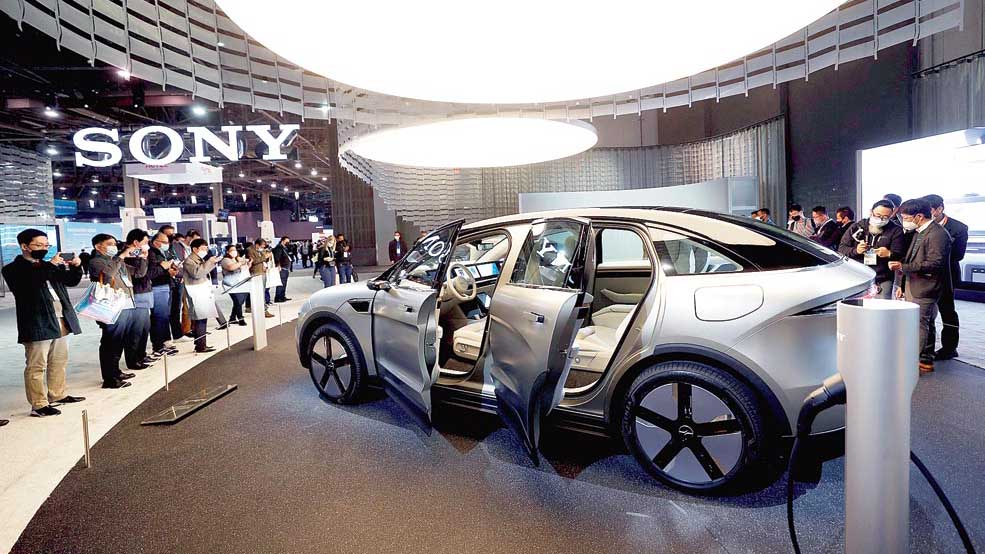
SONY’S ELECTRIC VEHICLES
Consumer electronic goods maker Sony Corporation of Japan displayed two prototype electric vehicles, the Vision-S 01 (above left) and the Vision-S 02, which is a seven-seater SUV type body on the same underpinnings as the sedan.
Sony says: “To demonstrate this concept in the real world, Sony started public road testing in Europe in December of the same year, and started verification tests of the safety and user experience of the imaging and sensing technology installed inside and outside the vehicle, and the human-machine interface (HMI) system. Sony began 5G driving tests in April 2021. The imaging technology uses CMOS sensors to correctly create its space in 3D.
Given Sony’s expertise, it is exploring the entertainment possibilities in the fairly large passenger space given that much of the driving will be done by the car itself when and if it goes into production. Sony will create a new operating company, Sony Mobility Inc., to explore its entry in the EV market. Now you can expect to see Bravia and PlayStation with 360 Reality Audio not only in your drawing room, but also in your car.
Sony is one more of the so-called non-car companies that is getting into the automotive space, a trend that we are likely to see more of in the years to come as the tech shift happens to EVs.
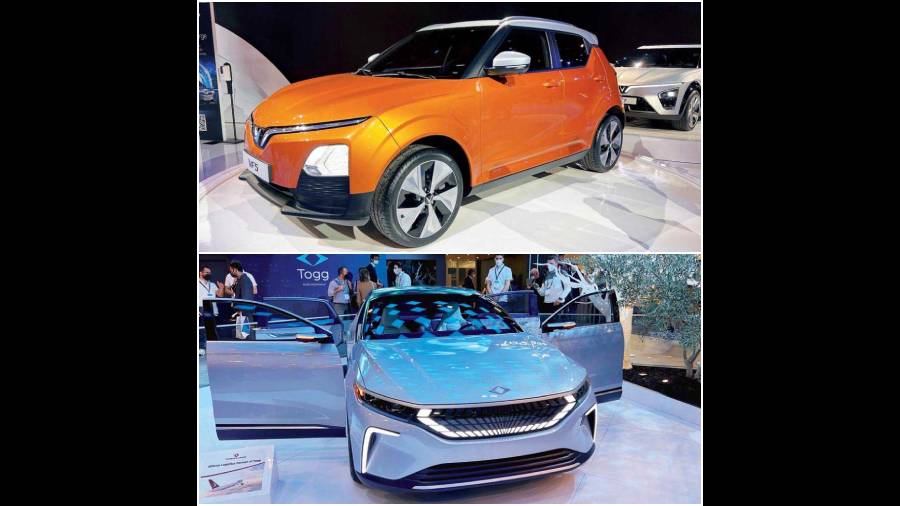
VINFAST AND TOGG
This has been happening for a while, but the Vinfast (top) and Togg (above) electric vehicles demonstrated how far electric vehicles could break up the stranglehold big auto has had on the automobile market. Vinfast is a Vietnamese company and maker of Vinfast VF5, a hatchback. It showed other cars at the CES as well as this one. Turkey, too, came in with its own EV, the Togg. And, on the face of it, it looks as good as any other. With EVs becoming mainstream and technology getting simplified with fewer things that can fail, expect more from unexpected countries.
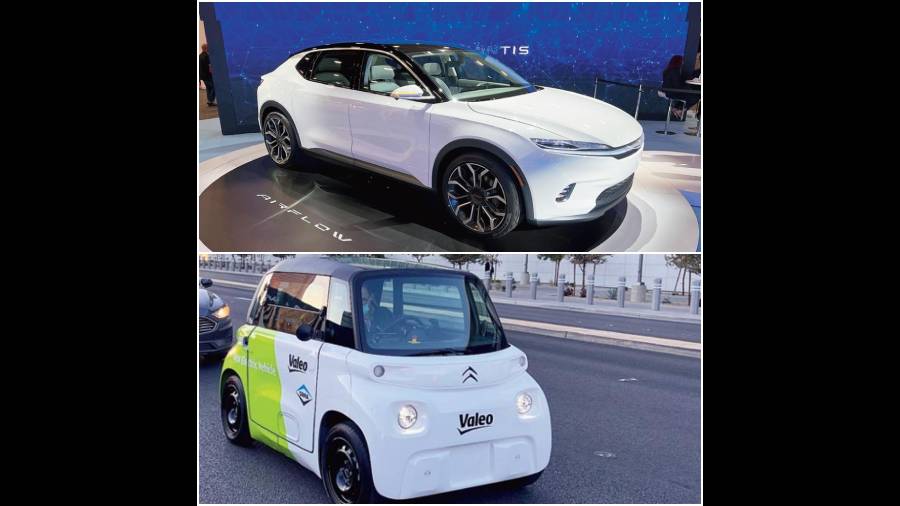
STELLANTIS
The Fiat-Chrysler Peugeot Citroen conglomerate is betting pretty big on EVs. To make its point it had the new Chrysler Airflow, the latest take on the name taken from the 1930s pathbreaking car from Chrysler. It has claimed 400 miles of range. That’s good enough to put range anxiety at rest for most users. It also has Level 3 Autonomous Driving capabilites. This crossover is supposed to have an output of over 400bhp, that should make it perky. Citroen, on the other hand, showed a city runabout.
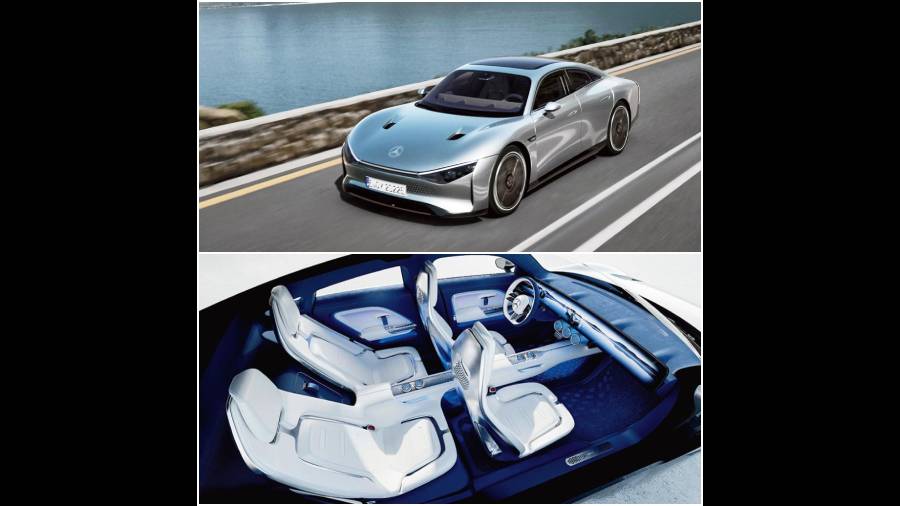
MERCEDES-BENZ VISION EQxx
The German luxury carmaker has been pushing the envelope for electric vehicles with its EQ series of commercially available cars and its ‘Vision’ EVs have been demonstrating various possibilities that a car can have as a living space and what one can do there. But that’s not where the story ends. Overcoming the limitations of range and making battery EVs travel as far or further on one charge than their internal combustion engine counterparts, thereby allaying fears of getting stranded, is a big hurdle that electrics seem to be on the verge of crossing. And with the Vision EQXX the milestone of 1,000km on a single charge has been crossed.
This is what Ola Kallenius, chairman of the board of management of Daimler AG and Mercedes-Benz AG, had to say: “The Mercedes-Benz Vision EQXX is how we imagine the future of electric cars. Just one-and-a-half years ago, we started this project leading to the most efficient Mercedes-Benz ever built — with an outstanding energy consumption of less than 10kWh per 100km. It has a range of more than 1,000km on a single charge using a battery that would fit even into a compact vehicle. The Vision EQXX is an advanced car in so many dimensions — and it even looks stunning and futuristic. With that, it underlines where our entire company is headed: We will build the world’s most desirable electric cars.”
Oh, and that interior with that panoramic screen on the dash is to die for.
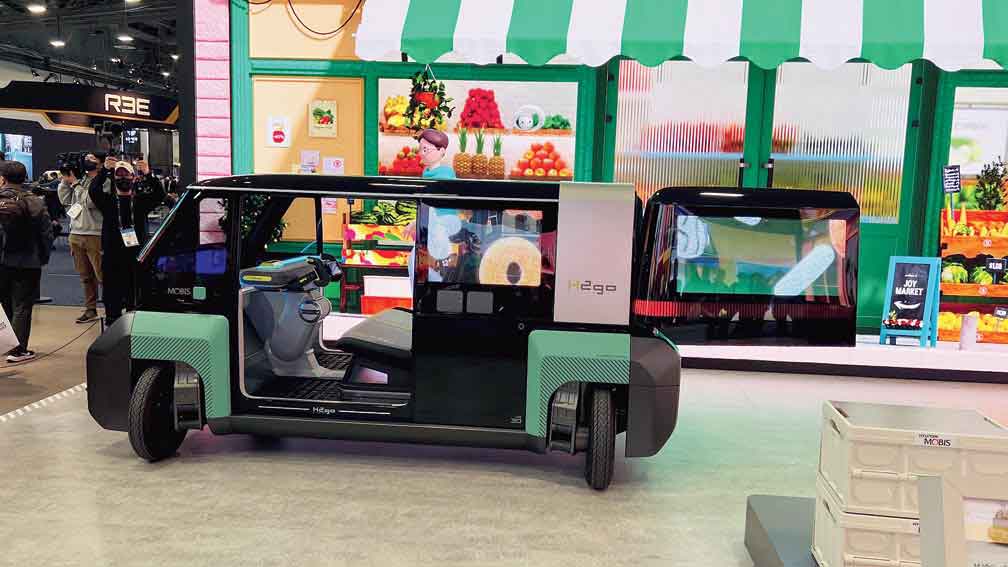
HYUNDAI M.VISION 2GO
The M.Vision 2Go along with the M.Vision Pop was Hyundai’s take on fuel cell transportation that they showed at CES. Both the vehicles are based on the same platform and can go about 200km on a charge. While the pop is a two-seater passenger vehicle, the 2Go is a delivery vehicle. This last-miler has a cargo capacity of 600litre. Interestingly, the concept has transparent LED screens for windows that can be used to display advertisements if desired.
The Pop and 2Go are ultra-manoeuvrable and the wheels can turn at right angles to the vehicle to help it park in tight spaces in the city. The Pop is targeted at the shared vehicle segment.

BMW iX M60
How about going to a party with your car in one colour and leaving with it in a different one? As party tricks go, that would be a hell of a good one. And luxury carmaker BMW has demonstrated just that at this year’s edition of CES.
It premiered the iX M60 model, which is the most powerful variant of the BMW Group’s new technology flagship. In its quest to give what it calls “the ultimate digital experience”, it has provided new My Modes, which create an immersive user experience in the interior. At CES, the BMW Group gives a glimpse of four new My Modes. The selection will soon be expanded to include the My Modes Expressive and Relax. In addition, Digital Art Mode (left) presents digital art in an automobile for the first time and the Theatre Mode heralds a new era for in-car entertainment.
As of now, the e-paper wrapping of the car can switch only between black and white, but eventually it would be able to do so in other colours as well.
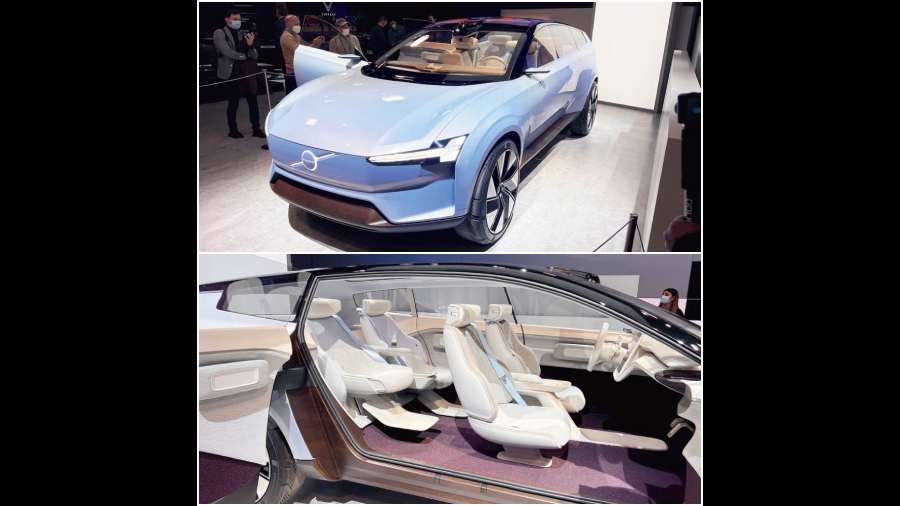
Volvo concept recharge
Luminar, the global leader in automotive lidar hardware and software technology, and Volvo Cars, the global automotive safety leader, announced launch plans for the all-electric next-generation SUV. This was the North American debut of the automaker’s Concept Recharge, a manifesto for Volvo Cars’ future, with Luminar’s Iris lidar seamlessly integrated into the roofline.
The first introduction of Volvo Cars’ Ride Pilot, an unsupervised autonomous driving capability for highways, will be introduced to customers in California first once it has been verified as safe for use and planned to be available as an add-on subscription. It will come equipped as standard with state-of-the-art lidar hardware with Luminar’s Iris and perception from its Sentinel solution to enable Proactive Safety from day one, in addition to software developed by Zenseact and Volvo Cars.

